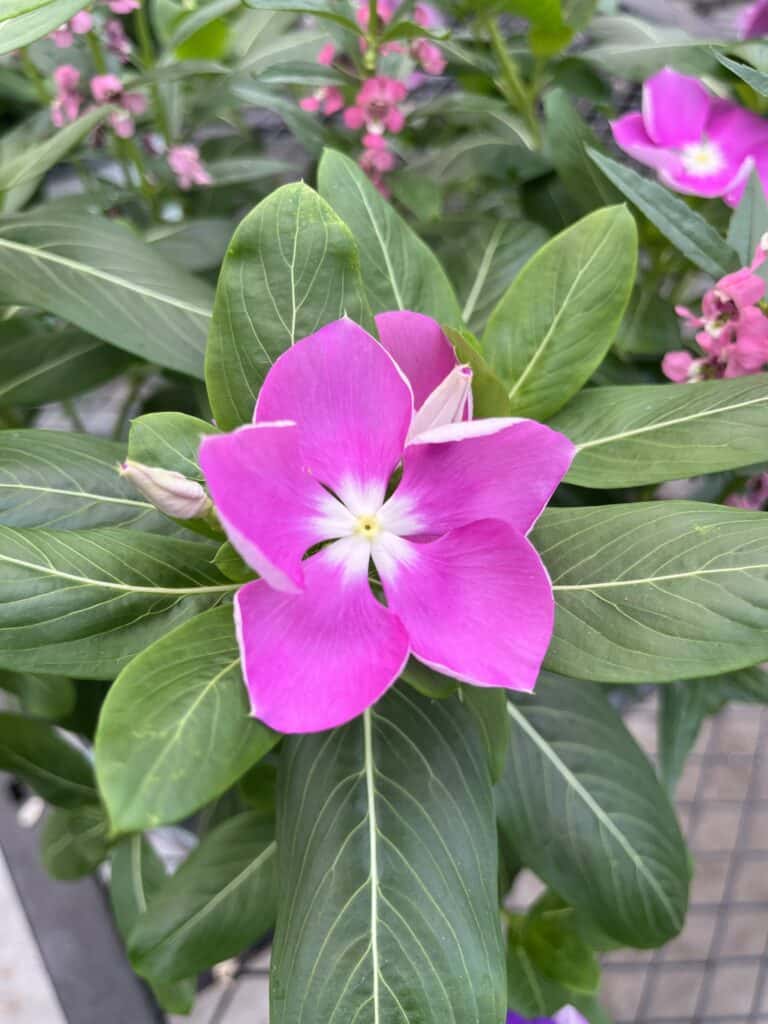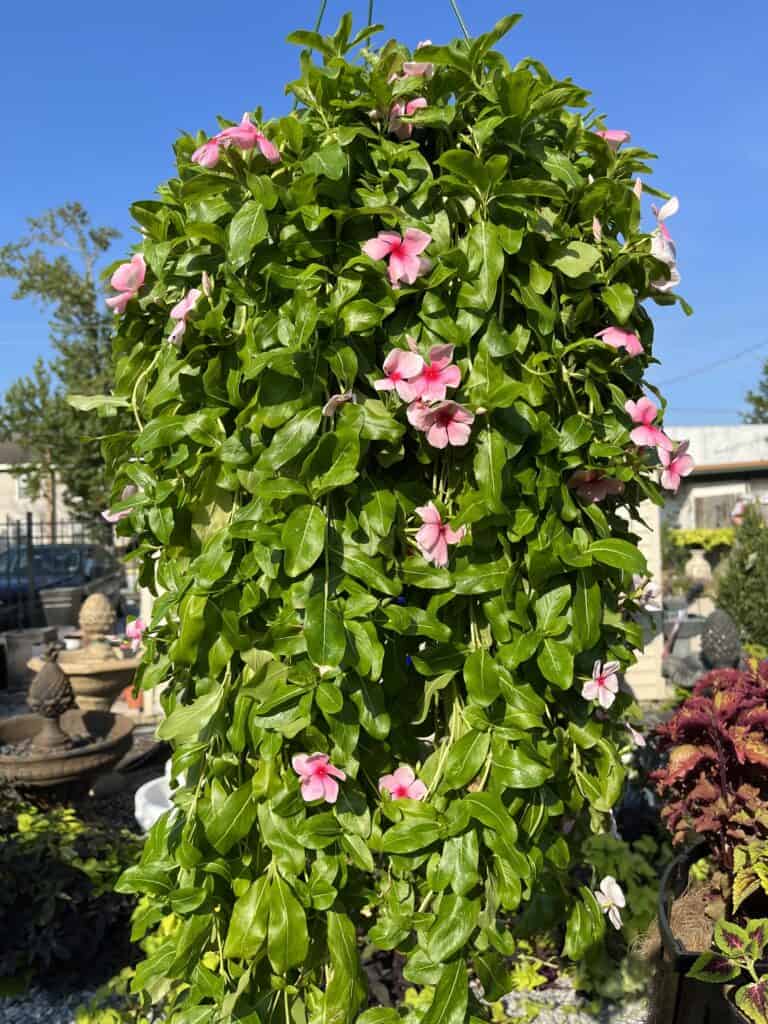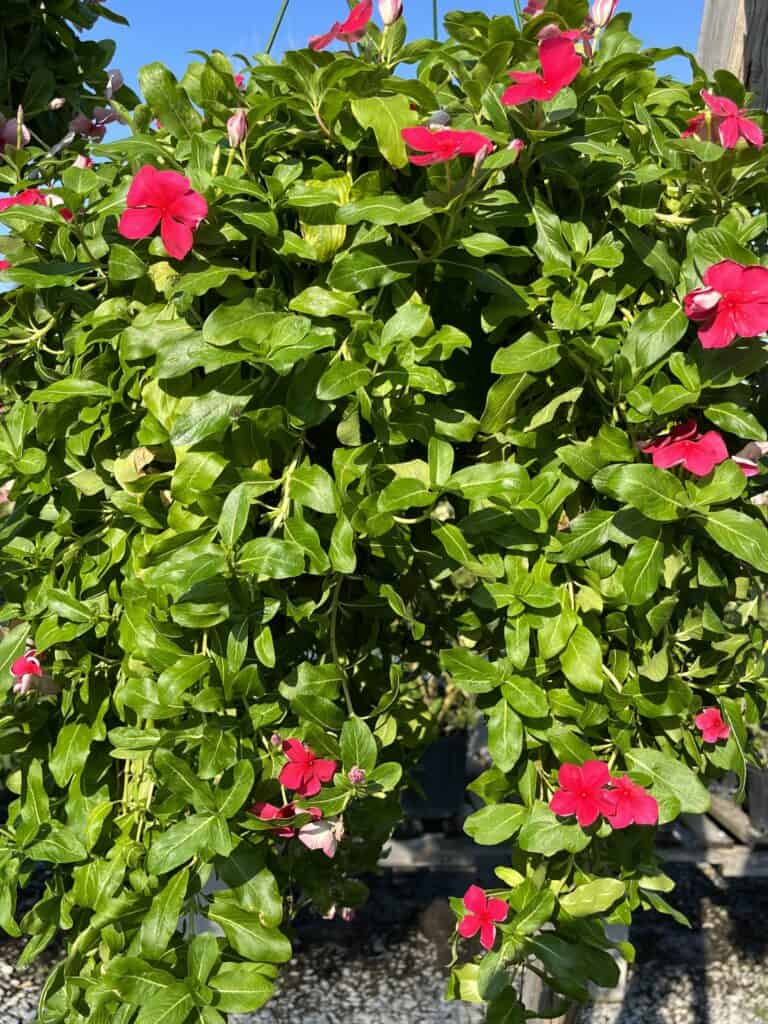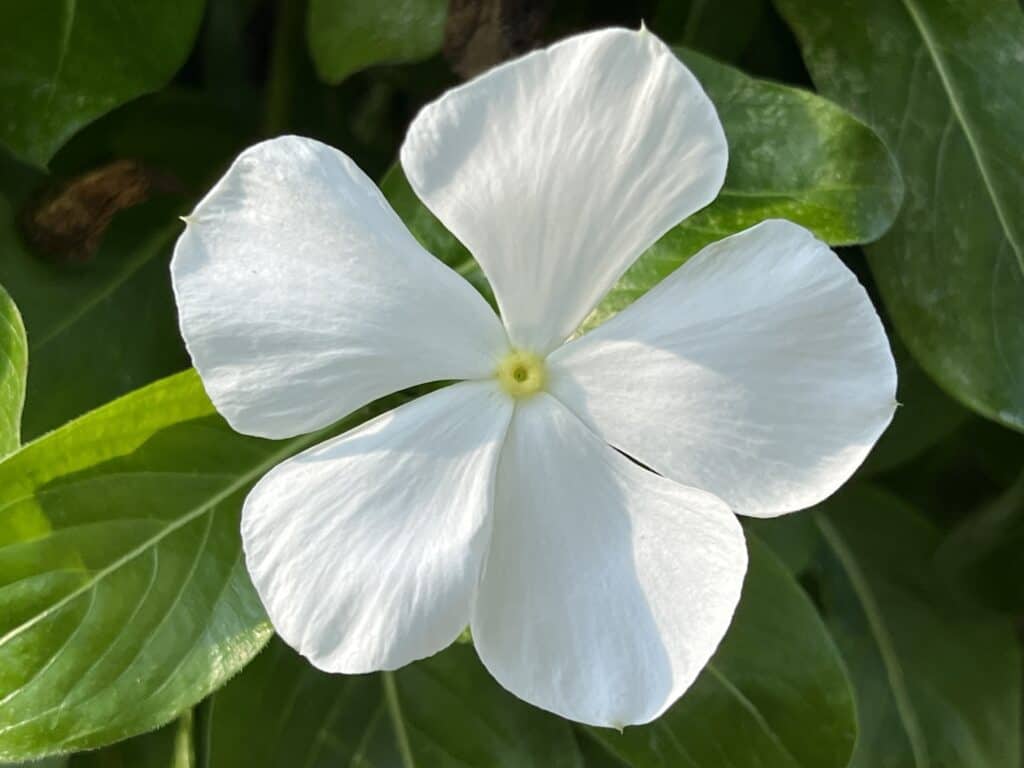Vincas … prolific blooms, excellent container spiller, thrives in heat
Catharanthus roseus, (also known as, Vinca roseus & Madagascar Periwinkle) is native to Madagascar. Also known as Rose Periwinkle, Cape Periwinkle, or Annual Vinca. Vinca is a annual but tender perennial used as an ornamental. It is a showy bedding plant and makes a good container, hanging plant. It has attractive five-lobed flowers with glossy green leaves on bushy spreading plants, prolific blooms in apricot, lavender, pink, red, burgundy, rose, white & many new shades, from summer to frost. They are tender perennials due to our mild winters and bloom next year. Plant Vinca up several inches high (raising the planting bed) when drainage is an issue and in rich but well drained acidic soil of 5.5 pH. Space plants 8-10 inches apart for good air circulation. They prefer warm conditions so plant May through August in full sun (Vincas prefer 8 hours of sun) to part sun. They thrive in intense heat. Water weekly during dry periods. Avoid wetting the foliage. Use slow-release fertilizer at planting and fertilize with general purpose fertilizer every 6-8 weeks. Cut back leggy stems this month to make them busher

‘Valiant Orchid’
Catharanthus roseus
Insects are not a problem for this plant. Phytophthora blight caused by a soil-borne fungal-like microorganism called Phytophthora parasitica is a problem. Plant vinca in raised area for good drainage, use mulch, but not excessive amounts (to minimize excess moisture) to help keep fungus from splashing on plants. Rhizoctonia disease shows up in the summer after plants are established. Botrytis (gray mold) and Alternaria (leaf spot) may appear in summer and fall so decrease irrigation during this time. Vinca require minimal irrigation. Avoid overhead irrigation with sprinklers, when possible. When plants make it through the spring and early summer without disease, hold back irrigation as Alternaria leaf spotting (another fungal disease) may develop heading into fall. Don’t plant vincas in the same bed every year and don’t plant in beds where Phytophthora blight has been a problem in the past.

‘Cora Cascade Cherry’ Trailing Vinca
Catharanthus roseus
New vinca varieties are resistant to some diseases. Cora and Nirvana series are some of the newer vincas that have genetics that makes these varieties resistant to Phytophthora blight. They have been evaluated in landscape trials at the LSU AgCenter Hammond Research Station and at the AgCenter Botanic Gardens at Burden with good results, according to Dr. Allen Owings, Horticulturist, retired researcher at LSU, Hammond Research Center. Varieties for Louisiana; Pacifica, Cooler, Mediterranean (use in planters/baskets due to spreading habit), Victory, Titan (largest flowers), Nirvana and Cora series
.
Vinca has reportedly been used for Centuries in traditional Chinese medicine to treat a range of ailments such as cancer, diabetes to depression. New Orleans gardeners have been using Vinca as an ornamental for decades according to Horticulturist Dan Gill, retired Consumer Horticulturist at LSU AgCenter.
*Reportedly, all parts of Vinca Catharanthus are highly poisonous and considered poisonous to humans, dogs, cats and horses. This plant should not be eaten. Other varieties of Vinca are not poisonous.

‘Cora Cascade Cherry’ Trailing Vinca
Catharanthus roseus

By Karen Blackburn
Master Gardener of Greater New Orleans

